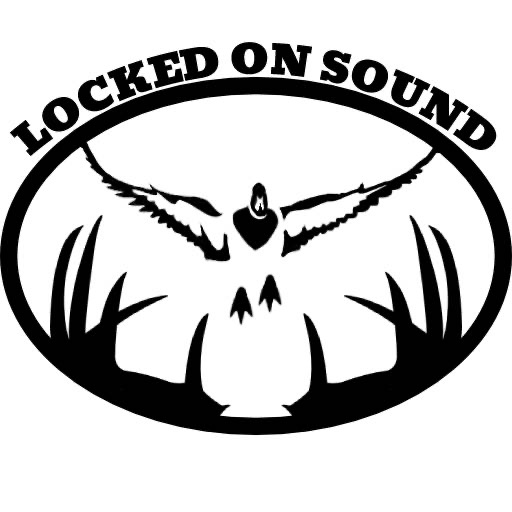A Deep Dive into Whitetail Deer Shed Hunting
- lockedonsound
- Apr 12, 2024
- 4 min read
The crisp winter air invigorates your lungs as you step off the crunchy trail, anticipation humming through your veins. You're not here for the thrill of the hunt this time, but for a different kind of treasure – the cast-off crown jewels of the whitetail buck, waiting to be discovered amongst the winter debris. Shed hunting offers a unique opportunity to immerse yourself in the hidden world of deer, gather valuable intel for next season's hunt, and unearth some fascinating natural history in the process.
When the Bucks Cast Off Their Crowns:
Understanding the shedding cycle is the foundation of successful shed hunting. Unlike their European cousins, whitetail bucks shed their antlers annually, typically between late December and early April. This biological marvel is triggered by shortening daylight hours, prompting a hormonal shift that causes the pedicles (bony knobs on the skull) to reabsorb the bone that anchored the antlers. The precise timing can vary depending on factors like age, health, nutrition, and even local weather patterns. However, the late-winter months of February and March mark the peak shedding period, making them prime time to hit the trail.
A Buck's Wintertime Haunts: Where the Magic Happens
Knowing where to focus your search is key to unearthing these hidden trophies. Here's where to set your sights:
Food Pantries of the Forest: Deer rely heavily on browse during the winter months. Scrutinize areas with natural food sources like stands of oak, maple, and wild cherry trees, or agricultural fields deer favor for winter sustenance. Sheds are more likely to be cast off where deer spend a significant amount of time foraging.
Travel Corridors: Nature's Deer Highways: Deer movement patterns become more predictable during winter as resources dwindle and energy conservation takes priority. Focus your search along well-worn game trails, especially those connecting feeding and bedding areas. These high-traffic routes are where bucks are most likely to shed antlers as they navigate the winter landscape.
Hidden Bedrooms: The Sanctuary of the Bedding Area: When not foraging, deer seek shelter in secluded areas with thick cover like evergreen stands, brushy ravines, or dense pockets of young trees. While it's best to avoid disturbing deer in their bedding areas during daylight hours, these secluded havens can be productive spots to search for sheds once the deer have vacated for the day.
The Art of the Search: Keen Eyes and Patience are Your Best Tools
The thrill of shed hunting lies in the challenge of the search. Here are some tips to maximize your success:
Be an Early Bird: Time your outings strategically. Fresh snowfall can make antlers stand out against the white canvas, but the melt-off can also reveal them as the snow cover recedes. Be among the first ones out after a winter storm to capitalize on this window of opportunity.
Slow and Steady Wins the Race: Resist the urge to rush through the woods. Instead, walk slowly and methodically, meticulously scanning the ground for any sign of bone protruding from the winter detritus. Antlers can blend in easily with fallen leaves, branches, and other debris, so a keen eye and a deliberate pace are essential.
Binoculars: Your Long-Distance Scouting Tools: Don't underestimate the power of binoculars. They can help you spot potential sheds from afar, especially in open areas or on hillsides. Scanning from a distance can save you time and wasted steps as you navigate the terrain.
Shifting Perspectives: Seeing What Blends In: Sometimes a change in perspective can make all the difference. Try crouching down low to get a better view under bushes or fallen logs. Conversely, climbing up a small hill or vantage point can offer a fresh angle and help you spot antlers that might otherwise be hidden from view.
Respect the Landowner's Domain: Private property is just that – private. Always obtain permission from the landowner before venturing onto their property in search of sheds. This is not only the courteous thing to do, but it's also essential to avoid any misunderstandings or trespassing violations.
Sheds as Signposts: Unlocking the Secrets of the Deer Herd
Shed hunting isn't just about acquiring impressive antlers. The very act of finding sheds can provide valuable intel for next season's hunt. Here's how:
High-Traffic Thoroughfares: Areas with a high concentration of sheds are strong indicators of well-used deer trails and bedding areas. These hotspots reveal where deer travel and concentrate their activity during the winter months, making them prime locations to set up treestands or ground blinds come hunting season.
Dominant Bucks: Following in the Footsteps of Champions: Large sheds with impressive size and mass likely came from the most mature bucks on the property. Knowing these bucks survived the harshest of season is an incredibly positive sign. Where these deer take refuge in the harshest times are where these deer will travel too during the late season push where most mature deer seem to just disappear. During your shed hunting trips this spring, be sure to keep a close eye out on nature, Understanding her most lucrative of decisions can provide you one of the best hunting seasons this coming fall. And at the end of the day, be sure to tag Locked On Sound on all of your shed hunting posts!





Comments